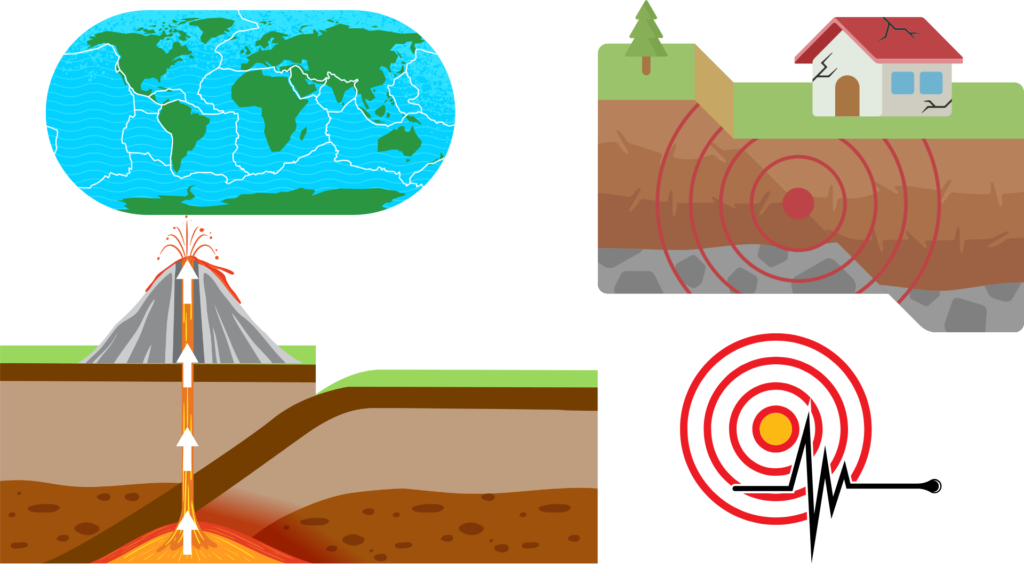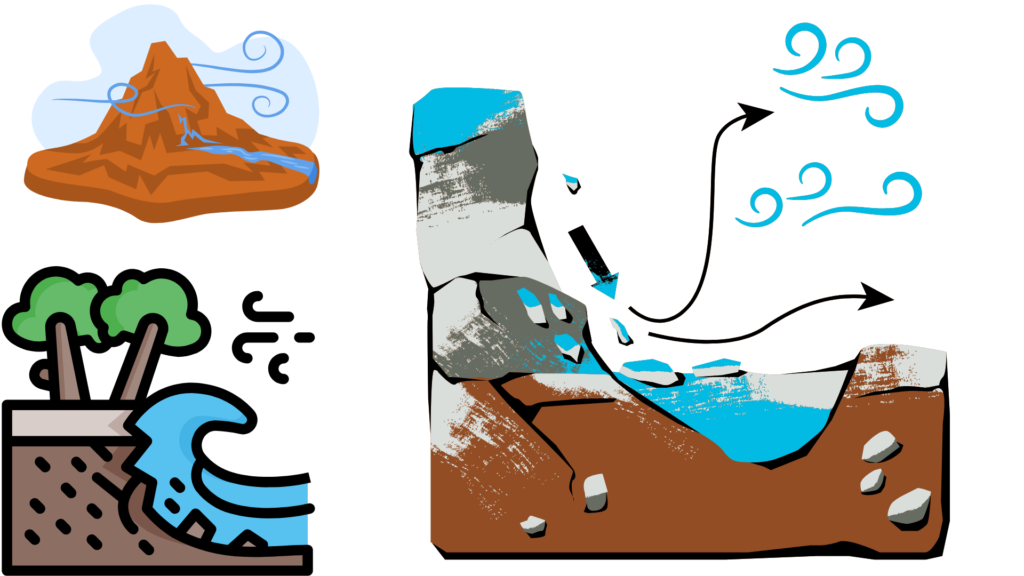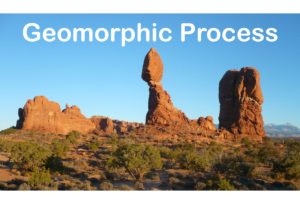Geology, at its heart, is the story of Earth’s constant transformation. While the planet might appear static in our daily lives, it is in fact constantly evolving—shaped and reshaped by invisible and visible forces. One of the most fascinating chapters in this story is written by geomorphic processes, the natural mechanisms that mold the Earth’s surface over time. These processes act like sculptors—some working slowly and patiently, others rapidly and violently—crafting mountains, valleys, rivers, deserts, and coastlines.
This article offers an accessible yet scientific exploration of geomorphic processes, their types, significance, and the breathtaking landforms they leave behind.
What Are Geomorphic Processes?
In simple terms, geomorphic processes are natural forces that alter the Earth’s surface. They are the agents of erosion, transportation, deposition, and weathering that interact with the lithosphere (Earth’s crust), hydrosphere (water), atmosphere (air), and biosphere (life).
These processes are broadly classified into two main categories:
- Endogenic processes – internal forces originating within the Earth
- Exogenic processes – external forces acting on the Earth’s surface
Together, these processes continuously reshape the planet, balancing uplift and degradation, building up and wearing down the land over geologic time.
Endogenic Processes: The Earth’s Internal Energy at Work
Endogenic (or endogenous) processes are driven by the heat and pressure from within the Earth’s interior. They are responsible for building up the Earth’s surface and are typically associated with tectonic activity, volcanism, and earthquakes.

Tectonic Processes
The Earth’s crust is divided into plates that float on the semi-fluid mantle. The movement of these plates leads to:
- Orogeny (mountain-building): When two plates collide, the crust is pushed upward to form mountain ranges like the Himalayas.
- Faulting and folding: These processes break and bend the rocks, creating features like ridges, valleys, escarpments, and rift zones.
- Earthquakes: Sudden release of stress along faults causes seismic waves, shaking and altering the landscape.
Volcanic Processes
Volcanoes erupt molten rock (magma), gases, and ash from beneath the Earth’s crust. Volcanism leads to:
- Formation of volcanic cones, plateaus, and calderas
- Creation of new land, like the Hawaiian Islands
- Enrichment of soils, fostering fertile lands
Though often violent, volcanic processes are also constructive—building land and recycling Earth’s materials.
Exogenic Processes: The Earth’s External Forces at Play
Exogenic (or exogenous) processes originate from forces acting on the Earth’s surface, mainly driven by solar energy and gravity. These processes wear down, transport, and redeposit material, shaping the land into new forms.
They are classified into four primary types:
Weathering: The Breakdown of Rocks
Weathering is the disintegration and decomposition of rocks in their original place. It sets the stage for erosion and soil formation.
- Physical (Mechanical) Weathering: Includes frost action, thermal expansion, and pressure release. For example, rocks cracking due to freezing and thawing in cold climates.
- Chemical Weathering: Involves chemical reactions like oxidation, hydrolysis, and carbonation. A common example is limestone dissolving in acidic rainwater.
- Biological Weathering: Caused by plants, animals, and microbes. Tree roots widening rock cracks are a typical illustration.
Erosion: Wearing Away and Transporting Material
Erosion is the removal and transportation of rock material by natural agents. Unlike weathering, erosion involves movement.
- Water Erosion: Rivers carve out valleys, gorges, and canyons. The Grand Canyon is a dramatic example of fluvial erosion.
- Wind Erosion: In arid regions, wind sculpts sand dunes and erodes rocks into mushroom-like shapes.
- Glacial Erosion: Glaciers grind away landscapes, creating U-shaped valleys and fjords.
- Coastal Erosion: Waves batter shorelines, forming cliffs, sea arches, and stacks.
Transportation: Movement of Material
After erosion, transportation is the process of moving sediments from one place to another.
- Rivers carry gravel, silt, and sand downstream.
- Winds lift fine dust and sand particles across deserts.
- Glaciers drag huge boulders over long distances.
- Ocean currents shift sediments along coastlines.
The mode of transport depends on the energy and nature of the transporting agent.
Deposition: The Laying Down of Sediments
Deposition occurs when the transporting agent loses energy and drops the sediment it was carrying. This process builds various landforms:
- Floodplains and deltas in river systems
- Sand dunes in deserts
- Moraines in glacial environments
- Beaches and sandbars along coasts
Over time, deposited sediments compact and cement into sedimentary rocks, preserving a record of ancient environments.
Geomorphic Agents: Forces Behind the Sculpting
The agents responsible for exogenic geomorphic processes include:
- Running water (rivers and streams)
- Glaciers
- Winds
- Waves
- Underground water
- Gravity (mass wasting)
Each agent is dominant in different environments and creates distinctive landforms. For instance, glacial landscapes differ vastly from fluvial or coastal terrains.

Mass Wasting: Gravity as a Silent Shaper
Mass wasting (or mass movement) is the downslope movement of soil and rock under gravity, without a transporting medium like water or wind.
- Landslides, rockfalls, and creep are examples.
- Often triggered by earthquakes, rainfall, or human activity, mass wasting can rapidly alter landscapes and pose serious hazards.
Mountainous areas, especially the Himalayas and Western Ghats in India, frequently experience mass wasting events.
Why Do Geomorphic Processes Matter?
Geomorphic processes don’t just shape the Earth; they impact human life in direct ways:
- Soil formation and fertility
- River systems and water resources
- Natural hazards like floods, landslides, and coastal erosion
- Landform evolution and habitat development
- Resource distribution (e.g., minerals in river placers or volcanic regions)
Urban planning, agriculture, infrastructure development, and disaster management all rely on a sound understanding of geomorphology.

